People frequently inquire about the permanence of the results of various cosmetic procedures. Unfortunately, we have yet to discover the fountain of youth, which would imply a permanent result. However, for under eye bags that are present all the time, which are most often a genetic condition, but can also be caused by aging, we can consistently achieve long-term results that can last for decades, and in some cases, results can be permanent.
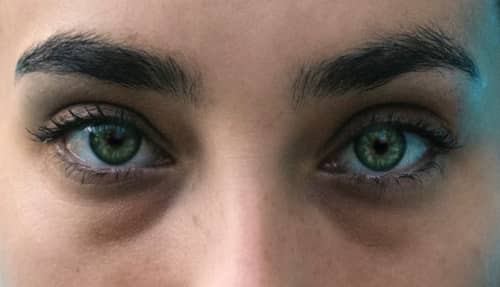
Causes of Eye Bags
The first issue to address is the underlying cause of persistent under eye bags. Orbital fat usually surrounds the eyeball for cushioning. Orbital fat sometimes prolapses or pushes forward, similar to a hernia, causing these bulges under the eyes.
Lower eyelid fat pads prolapse can be a hereditary condition that’s why eye bags can appear in younger people. Board certified Oculoplastic Surgeon Dr. Amiya Prasad has operated on patients with eye bags from three generations of the same family. Eye bags can also be a sign of facial aging, where prolapsed fat develops or worsens with age.
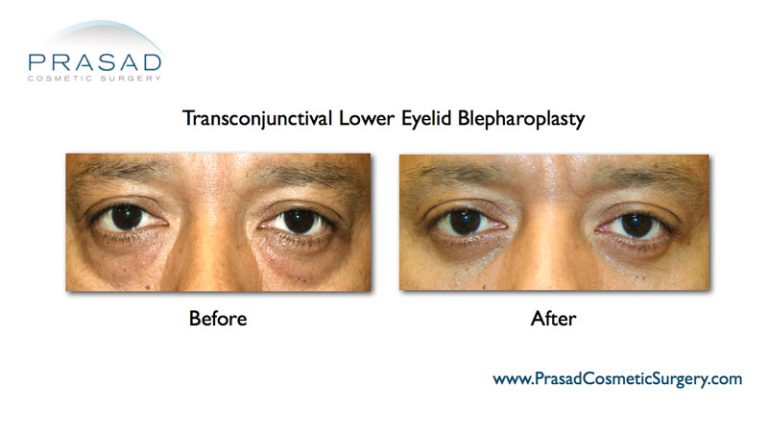
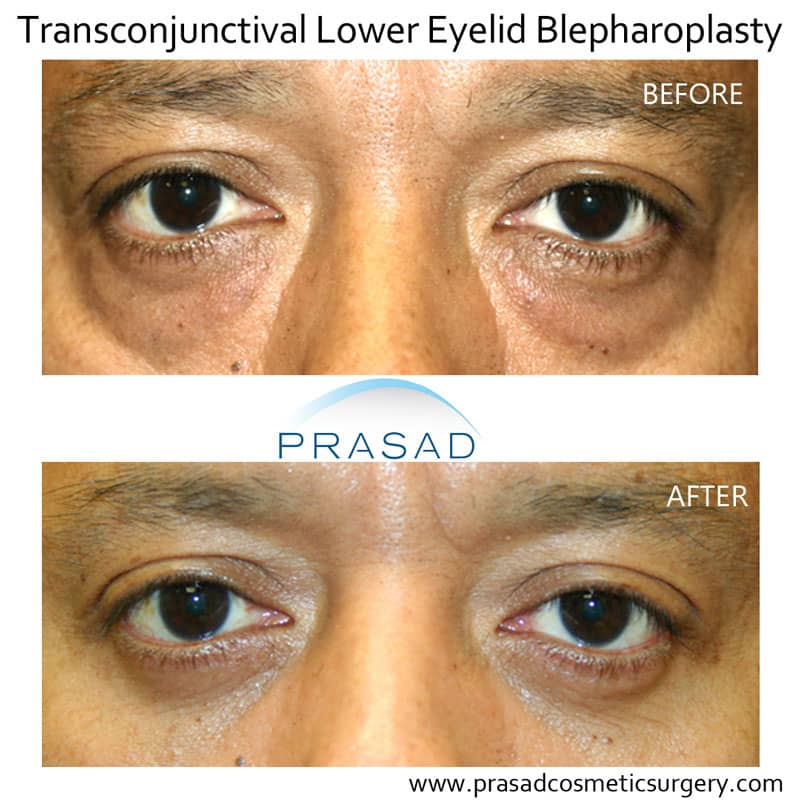
Eye bags caused by prolapsed fat are treated definitively with lower eyelid surgery, also called lower eyelid blepharoplasty. The procedure involves sculpting the prolapsed fat surgically, then removing the sculpted fat. The art of this surgical procedure is in leaving a little fat behind to ensure a beautiful contour, and preventing a hollow appearance under the eyes.
What is Transconjunctival Blepharoplasty?
As mentioned earlier, the fat that causes eye bags is sculpted using the transconjunctival blepharoplasty method, which is done from behind the lower eyelid so there is no incision in the lower eyelid. Transconjunctival blepharoplasty appears more natural because there is no visible external incision, and it is less prone to complications. The external incision is used in the transcutaneous blepharoplasty method, which is more commonly used, and can compromise lower eyelid support structures.
Transconjunctival blepharoplasty is a more specialized procedure performed by fewer surgeons. General plastic surgeons are not tested on transconjunctival blepharoplasty for Board certification instead they are trained and tested on transcutaneous blepharoplasty. Transcutaneous blepharoplasty involves an incision along the eyelashes to access the fat pockets for sculpting and removal.
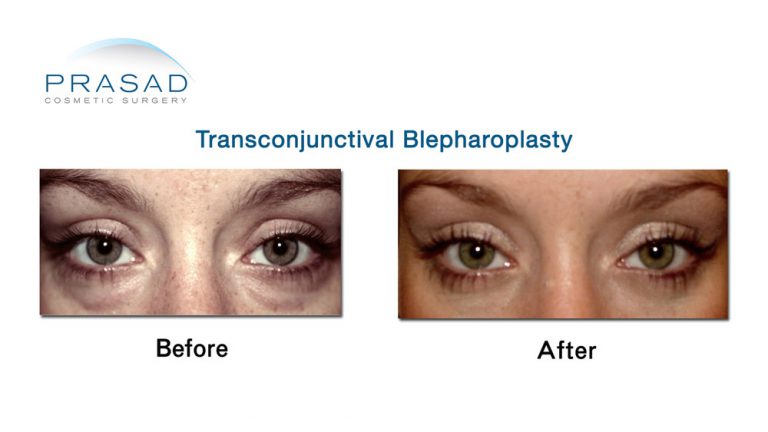
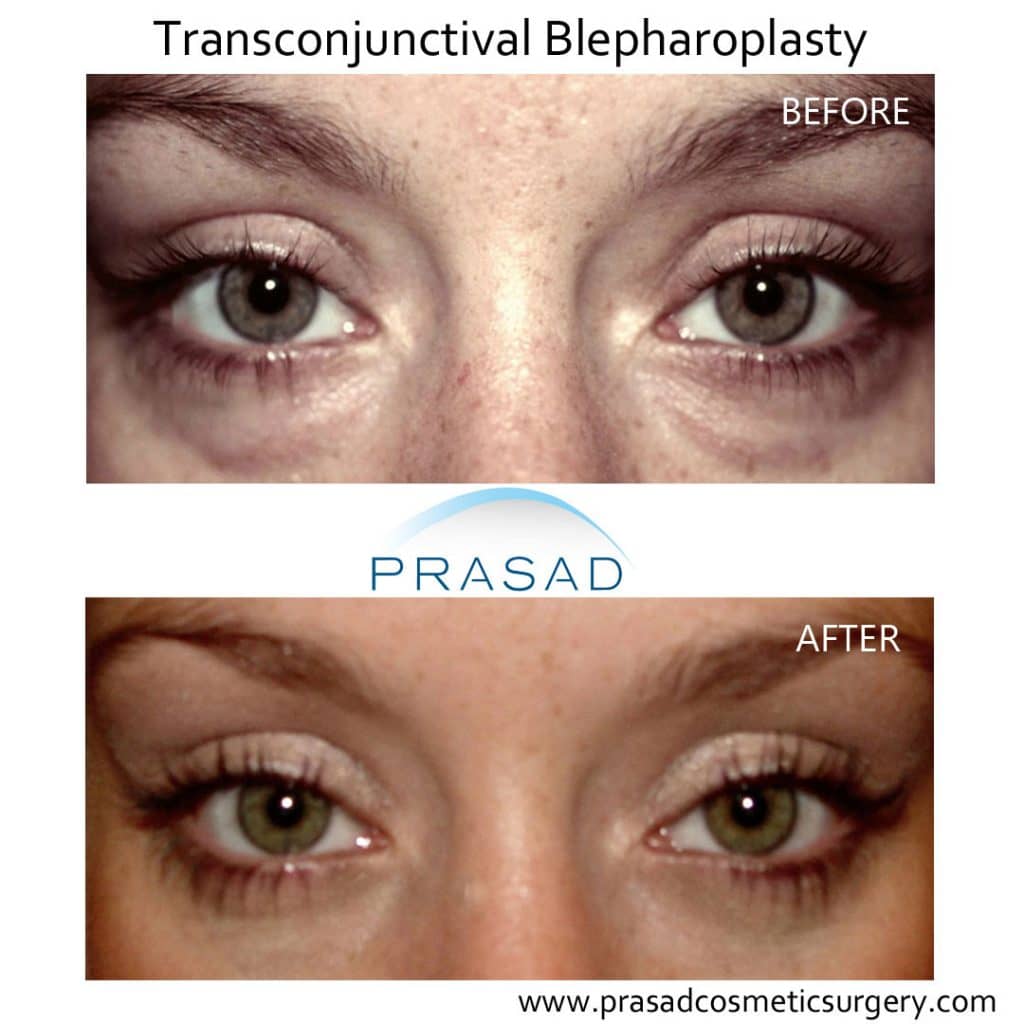
Treating under eye wrinkles is another important factor in avoiding complications from eye bag surgery. Under eye wrinkles are the result of diminished skin quality due to aging, as well as other factors like excessive sun exposure, smoking, and pollution, which can hasten the effects of aging.
Possible Complications from Transcutaneous Blepharoplasty
Many surgeons remove a small amount of lower eyelid skin when performing transcutaneous blepharoplasty, believing that this will improve the appearance of wrinkles. However, this causes a skin shortage, causing the eyes to appear rounded or pulled down, a condition called lower eyelid retraction.

The remaining eyelid skin can also evert outward, a condition known as ectropion, or invert inward, a condition called entropion. Skin removal can also cause improper eye closure, which can disrupt sleep and cause eye irritation. These complications are expensive to surgically correct, and Dr. Prasad frequently performs lower eyelid restoration for patients who have had their eye bag surgery performed by other doctors.
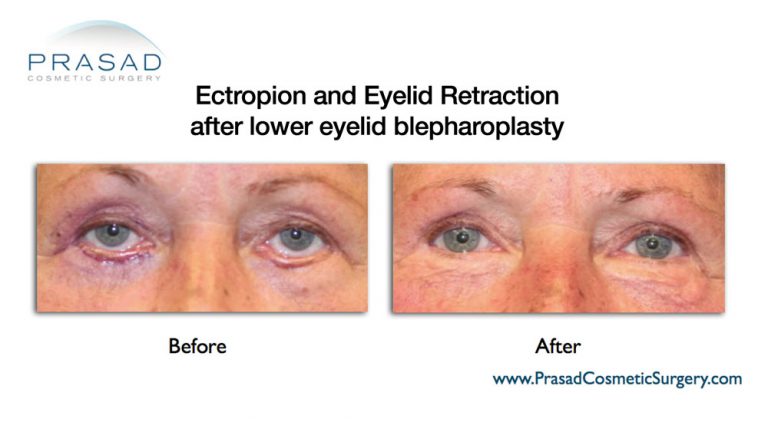
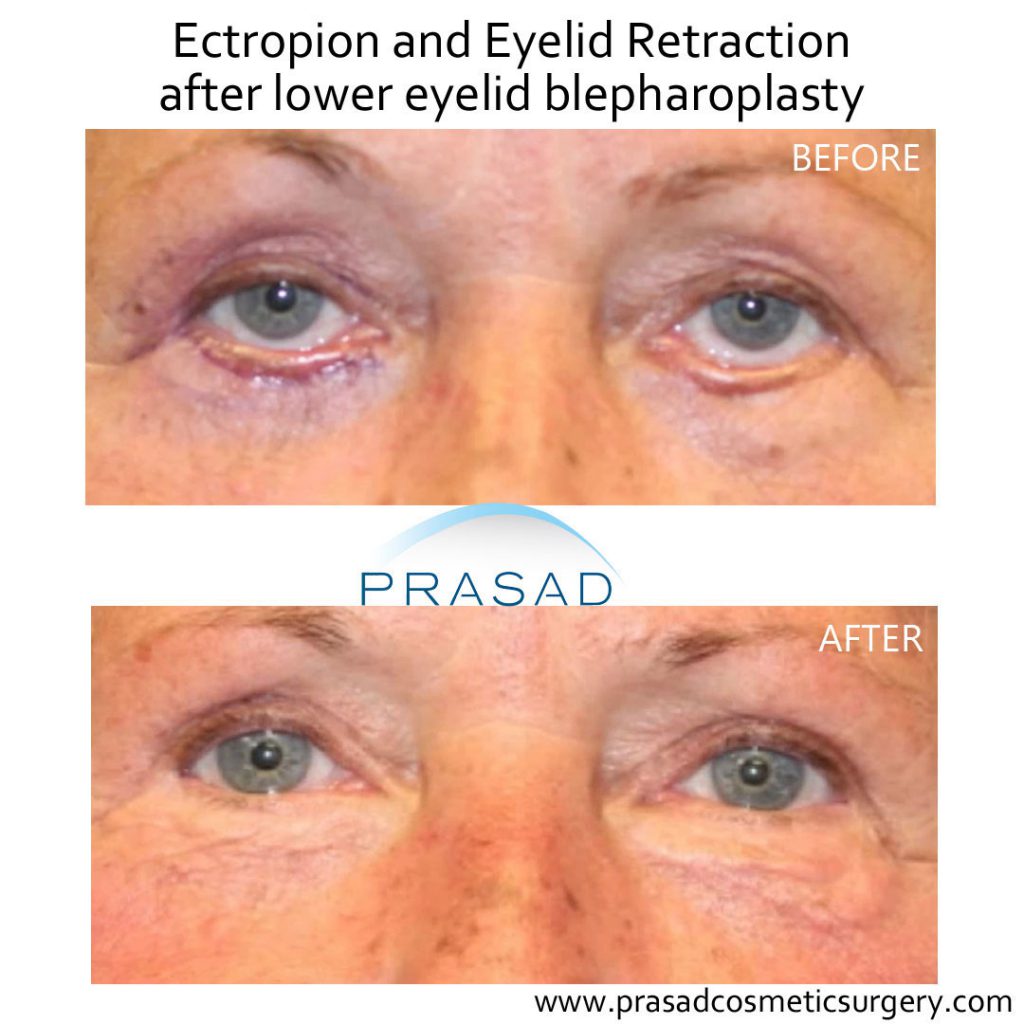
These complications are avoided by using the transconjunctival blepharoplasty approach. Which doesn’t use an external incision in the lower eyelid, and by not removing any skin to treat wrinkles as they’re a problem of skin quality, not excess skin quantity.
How to Reduce Wrinkles Under Eyes
To address under eye wrinkles Dr. Prasad will use platelet-rich plasma or PRP, to improve the quality and texture of the lower eyelid skin, as well as laser or radiofrequency treatment to tighten or resurface the skin to reduce the appearance of wrinkles. He only removes lower eyelid skin when excess skin folds over in the lower eyelids, in which case a skin pinch blepharoplasty is performed.
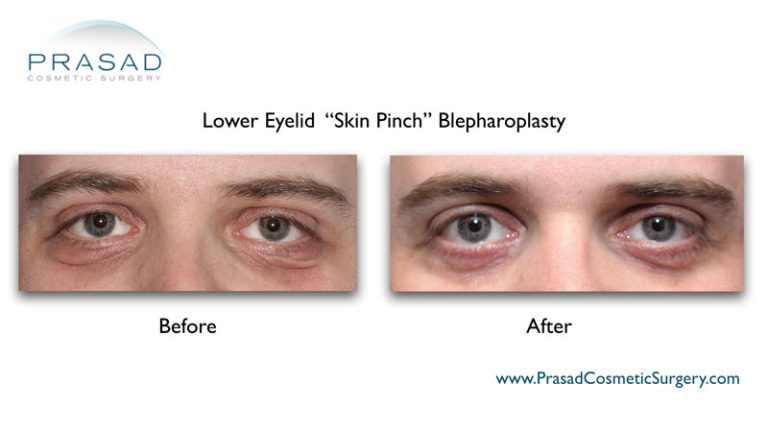
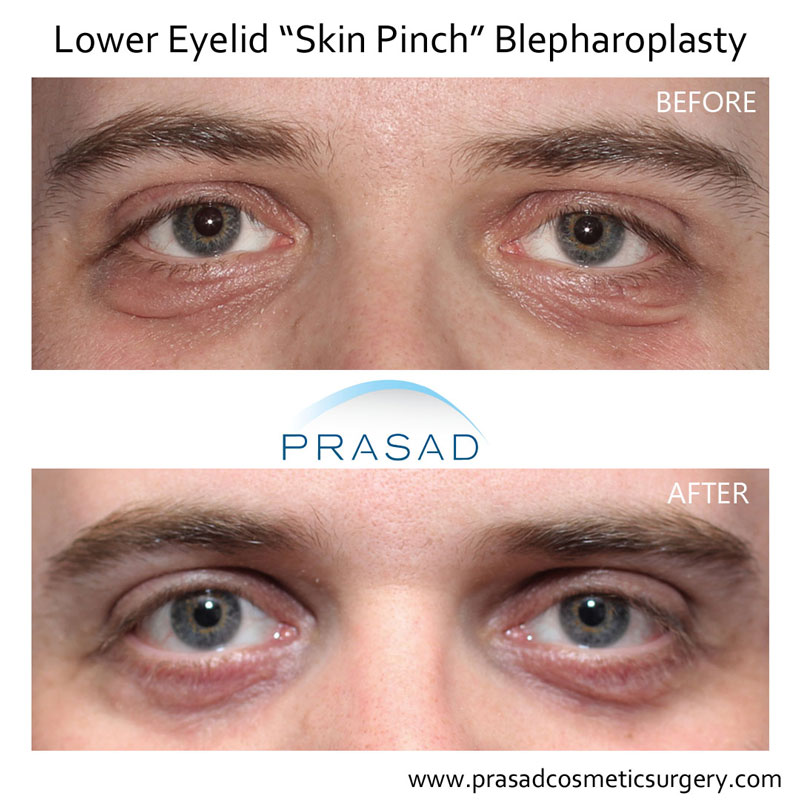
To understand the longevity of eye bag removal surgery, one must first examine the behavior of orbital fat. The volume of orbital fat does not increase with weight gain or decrease with weight loss, even extreme weight loss such as starvation, or extreme weight gain like obesity. Orbital is always present because it serves the function of cushioning and positioning the eyeball.
Once prolapsed orbital fat is sculpted and removed, that same fat does not come back. It is not uncommon for patients to have the results of their under eye bag surgery last 20 years with no recurrence of their eye bags. Dr. Prasad recently received a letter from one of his first patients, who stated that her eye bags never returned even 30 years after Dr. Prasad performed her surgery.
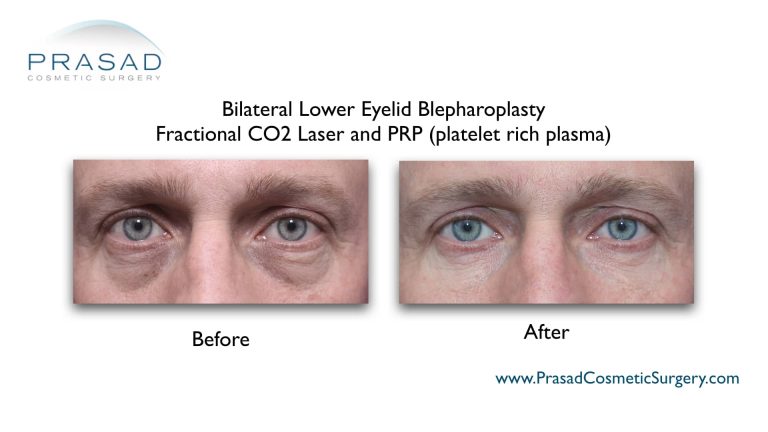
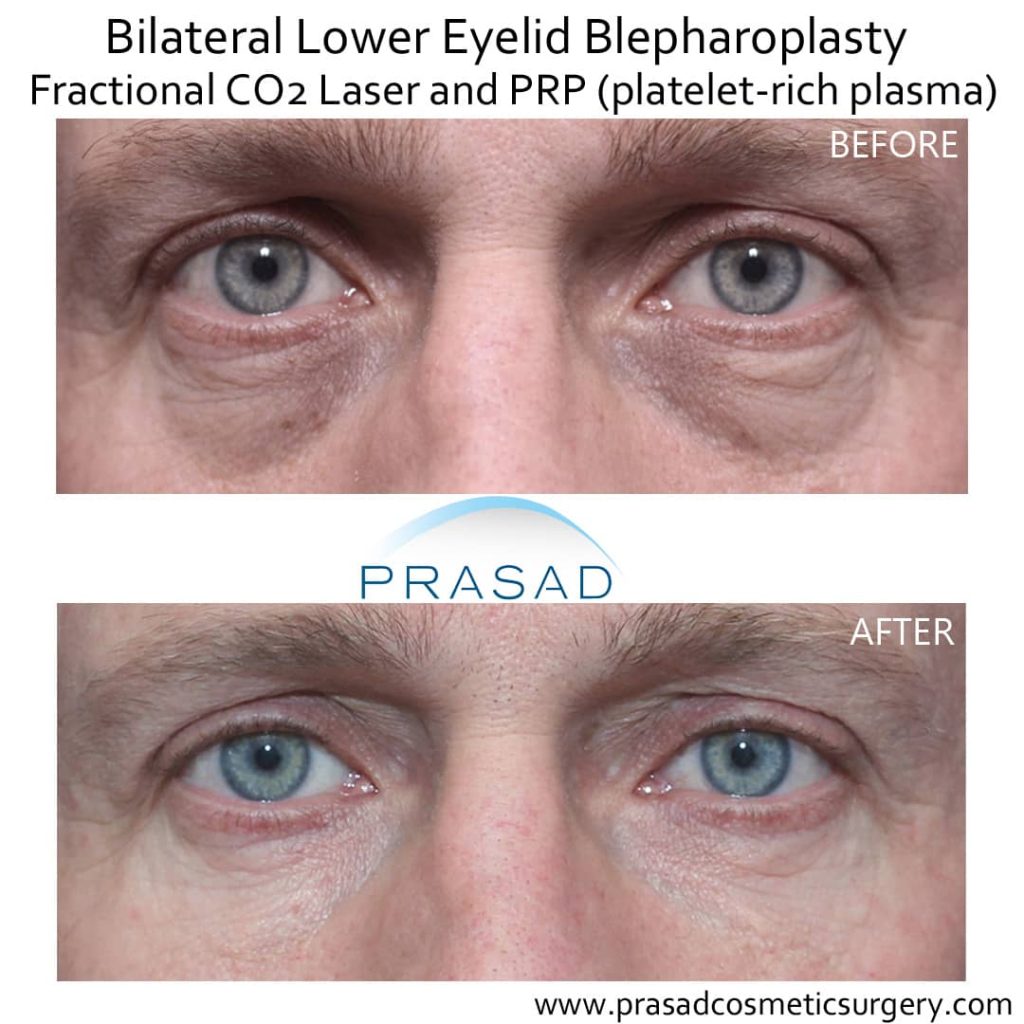
Since the results of eye bag removal surgery can last for so long, it is often a permanent procedure for many patients. However, even if the removed orbital fat does not return, there is no guarantee that new orbital fat will form and prolapse forward, causing eye bags again. MRI studies have shown that new orbital fat can form for protection and cushioning of the eyeball, and there is a chance that new orbital fat can prolapse forward, causing eye bags again.
Lower Blepharoplasty Results
To answer the question if eye bag surgery or lower blepharoplasty is permanent, there is no guarantee that results can be permanent, but results are usually long-term and can last decades. Since the effects of eye bag removal surgery can last for so long, for many people the results are permanent.
Of all the cosmetic surgeries from upper eyelid surgery, facelifts, brow lifts, and neck lifts, the results of lower blepharoplasty for eye bags will likely last the longest. Unlike the upper eyelids, where eyelid skin stretching due to aging continues after surgery, making the upper eyelids appear hooded over time, fat in the lower eyelids does not accumulate gradually.

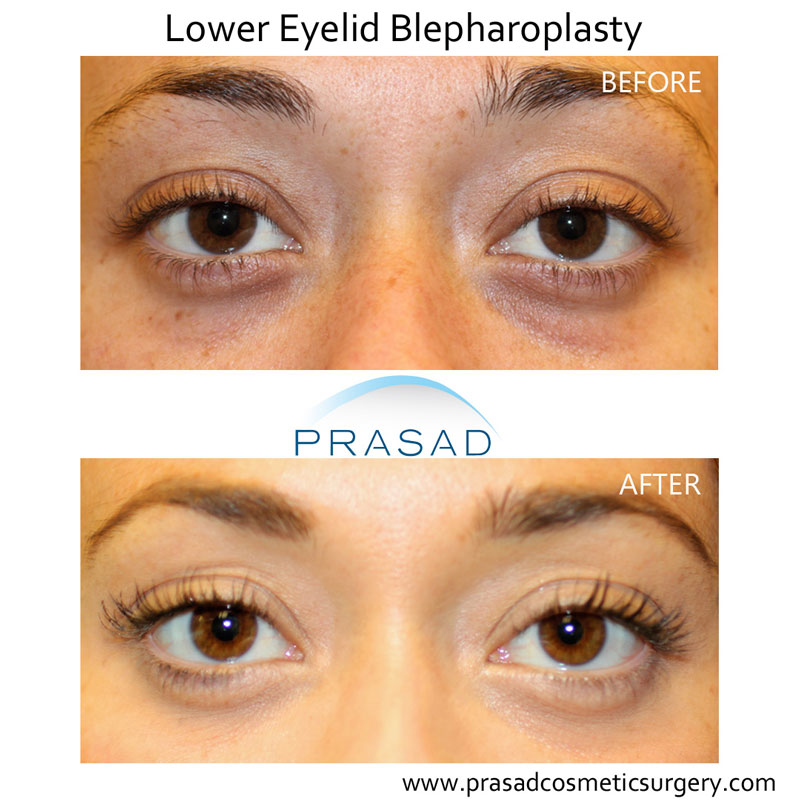
View more lower blepharoplasty before and after photos
The same comparison can be made with facelifts, where skin, muscle, and soft tissue experience progressive laxity because of continued aging after surgery, but the same does not apply to prolapsed fat. The prolapsed orbital fat under the eyes is not a progressive condition, and the same fat that was sculpted and removed doesn’t return. New orbital fat can prolapse years after the initial eye bag surgery, it will likely be more sudden, rather than progressive like other facial aging changes.
Lower lid blepharoplasty for eye bags can be expected to last longer than most other cosmetic procedures, with results often lasting decades, and in some patients, even a lifetime. However, it is important to remember that our bodies are not permanent, as aging changes occur after any cosmetic medical procedure, and we have not discovered the Fountain of Youth that can stop the effects of aging.
